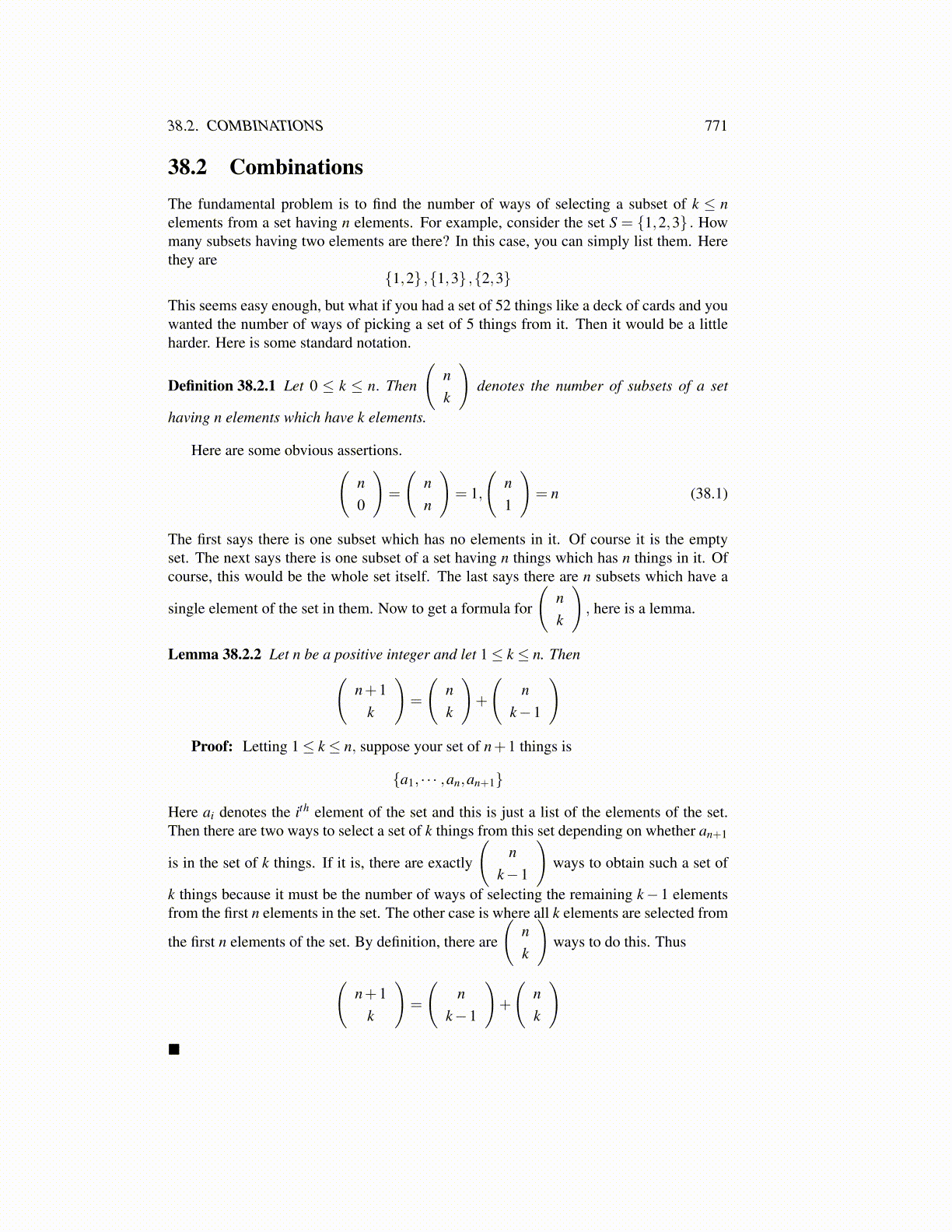
38.2. COMBINATIONS 771
38.2 CombinationsThe fundamental problem is to find the number of ways of selecting a subset of k ≤ nelements from a set having n elements. For example, consider the set S = {1,2,3} . Howmany subsets having two elements are there? In this case, you can simply list them. Herethey are
{1,2} ,{1,3} ,{2,3}
This seems easy enough, but what if you had a set of 52 things like a deck of cards and youwanted the number of ways of picking a set of 5 things from it. Then it would be a littleharder. Here is some standard notation.
Definition 38.2.1 Let 0 ≤ k ≤ n. Then
(nk
)denotes the number of subsets of a set
having n elements which have k elements.
Here are some obvious assertions.(n0
)=
(nn
)= 1,
(n1
)= n (38.1)
The first says there is one subset which has no elements in it. Of course it is the emptyset. The next says there is one subset of a set having n things which has n things in it. Ofcourse, this would be the whole set itself. The last says there are n subsets which have a
single element of the set in them. Now to get a formula for
(nk
), here is a lemma.
Lemma 38.2.2 Let n be a positive integer and let 1≤ k ≤ n. Then(n+1
k
)=
(nk
)+
(n
k−1
)
Proof: Letting 1≤ k ≤ n, suppose your set of n+1 things is
{a1, · · · ,an,an+1}
Here ai denotes the ith element of the set and this is just a list of the elements of the set.Then there are two ways to select a set of k things from this set depending on whether an+1
is in the set of k things. If it is, there are exactly
(n
k−1
)ways to obtain such a set of
k things because it must be the number of ways of selecting the remaining k−1 elementsfrom the first n elements in the set. The other case is where all k elements are selected from
the first n elements of the set. By definition, there are
(nk
)ways to do this. Thus
(n+1
k
)=
(n
k−1
)+
(nk
)■